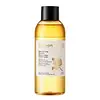What's inside
What's inside
 Key Ingredients
Key Ingredients

 Benefits
Benefits

 Concerns
Concerns

No concerns
 Ingredients Side-by-side
Ingredients Side-by-side

Water
Skin ConditioningPolyglyceryl-4 Laurate/Sebacate
SolventPolyglyceryl-4 Caprylate/Caprate
Betaine
HumectantBenincasa Cerifera Fruit Extract
Skin ConditioningCentella Asiatica Extract
CleansingO-Cymen-5-Ol
AntimicrobialPropanediol
SolventGlycereth-26
HumectantGlycerin
HumectantTrisodium Ethylenediamine Disuccinate
Sodium Lactate
BufferingCetylpyridinium Chloride
AntimicrobialMelaleuca Alternifolia Leaf Oil
AntioxidantLactic Acid
BufferingWater, Polyglyceryl-4 Laurate/Sebacate, Polyglyceryl-4 Caprylate/Caprate, Betaine, Benincasa Cerifera Fruit Extract, Centella Asiatica Extract, O-Cymen-5-Ol, Propanediol, Glycereth-26, Glycerin, Trisodium Ethylenediamine Disuccinate, Sodium Lactate, Cetylpyridinium Chloride, Melaleuca Alternifolia Leaf Oil, Lactic Acid
Water
Skin ConditioningIsohexadecane
EmollientCyclopentasiloxane
EmollientIsononyl Isononanoate
EmollientSodium Lactate
BufferingRosa Damascena Flower Water
MaskingPolyglyceryl-4 Laurate/Sebacate
SolventPolyglyceryl-4 Caprylate/Caprate
Caprylic/Capric Triglyceride
MaskingHaematococcus Pluvialis Extract
AntioxidantRosmarinus Officinalis Leaf Extract
AntimicrobialPanthenol
Skin ConditioningGlycerin
HumectantHydroxymethoxyphenyl Decanone
Skin ConditioningTrisodium Ethylenediamine Disuccinate
Lactic Acid
BufferingCetylpyridinium Chloride
AntimicrobialWater, Isohexadecane, Cyclopentasiloxane, Isononyl Isononanoate, Sodium Lactate, Rosa Damascena Flower Water, Polyglyceryl-4 Laurate/Sebacate, Polyglyceryl-4 Caprylate/Caprate, Caprylic/Capric Triglyceride, Haematococcus Pluvialis Extract, Rosmarinus Officinalis Leaf Extract, Panthenol, Glycerin, Hydroxymethoxyphenyl Decanone, Trisodium Ethylenediamine Disuccinate, Lactic Acid, Cetylpyridinium Chloride
 Reviews
Reviews

Ingredients Explained
These ingredients are found in both products.
Ingredients higher up in an ingredient list are typically present in a larger amount.
We don't have a description for Cetylpyridinium Chloride yet.
Glycerin is already naturally found in your skin. It helps moisturize and protect your skin.
A study from 2016 found glycerin to be more effective as a humectant than AHAs and hyaluronic acid.
As a humectant, it helps the skin stay hydrated by pulling moisture to your skin. The low molecular weight of glycerin allows it to pull moisture into the deeper layers of your skin.
Hydrated skin improves your skin barrier; Your skin barrier helps protect against irritants and bacteria.
Glycerin has also been found to have antimicrobial and antiviral properties. Due to these properties, glycerin is often used in wound and burn treatments.
In cosmetics, glycerin is usually derived from plants such as soybean or palm. However, it can also be sourced from animals, such as tallow or animal fat.
This ingredient is organic, colorless, odorless, and non-toxic.
Glycerin is the name for this ingredient in American English. British English uses Glycerol/Glycerine.
Learn more about GlycerinLactic Acid is another well-loved alpha hydroxy acid (AHA). It is gentler than glycolic acid but still highly effective.
Its main role is to exfoliate the surface of the skin by loosening the “glue” that holds dead skin cells together. Shedding those old cells leads to smoother, softer, and more even-toned skin.
Because lactic acid molecules are larger than glycolic acid, they don’t penetrate as deeply. This means they’re less likely to sting or irritate, making it a great choice for beginners or those with sensitive skin.
Like glycolic acid, it can:
Lactic acid also acts as a humectant (like hyaluronic acid). It can draw water into the skin to improve hydration and also plays a role in the skin's natural moisturizing factor (NMF) in the form of sodium lactate.
Studies show it can boost ceramide production to strengthen the skin barrier and even help balance the skin’s microbiome.
To get results, choose products with a pH between 3-4.
Lower strengths (5-12%) focus on surface exfoliation; higher strengths (12% and up) can reach deeper in the dermis (deeper, supportive layer) to improve skin texture and firmness over time.
Though it was originally derived from milk, most modern lactic acid used in skincare is vegan. It is made through non-dairy fermentation to create a bio-identical and stable form suitable for all formulations.
When lactic acid shows up near the end of an ingredient list, it usually means the brand added just a tiny amount to adjust the product’s pH.
Legend has it that Cleopatra used to bathe in sour milk to help reduce wrinkles.
Lactic acid is truly a gentle multitasker: it exfoliates, hydrates, strengthens, and brightens. It's a great ingredient for giving your skin a smooth, glowing, and healthy look without the harshness of stronger acids.
Read more about some other popular AHA's here:
Learn more about Lactic AcidWe don't have a description for Polyglyceryl-4 Caprylate/Caprate yet.
We don't have a description for Polyglyceryl-4 Laurate/Sebacate yet.
Sodium Lactate is the sodium salt of lactic acid, an AHA. It is a humectant and sometimes used to adjust the pH of a product.
This ingredient is part of our skin's NMF, or natural moisturizing factor. Our NMF is essential for the hydration of our top skin layers and plasticity of skin. NMF also influences our skin's natural acid mantle and pH, which protects our skin from harmful bacteria.
High percentages of Sodium Lactate can have an exfoliating effect.
Fun fact: Sodium Lactate is produced from fermented sugar.
Learn more about Sodium LactateTrisodium Ethylenediamine Disuccinate is used to help stabilize a product.
It is a chelating agent, meaning it helps prevent metal ions from binding to other ingredients. This prevents unwanted reactions in products. Metal ions can come into a product via the water ingredient. They are found in trace amounts and are not known to be harmful.
Water. It's the most common cosmetic ingredient of all. You'll usually see it at the top of ingredient lists, meaning that it makes up the largest part of the product.
So why is it so popular? Water most often acts as a solvent - this means that it helps dissolve other ingredients into the formulation.
You'll also recognize water as that liquid we all need to stay alive. If you see this, drink a glass of water. Stay hydrated!
Learn more about Water